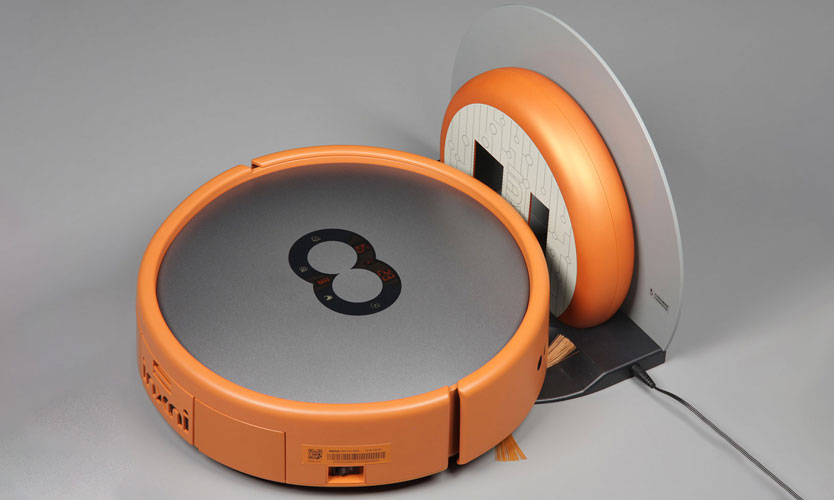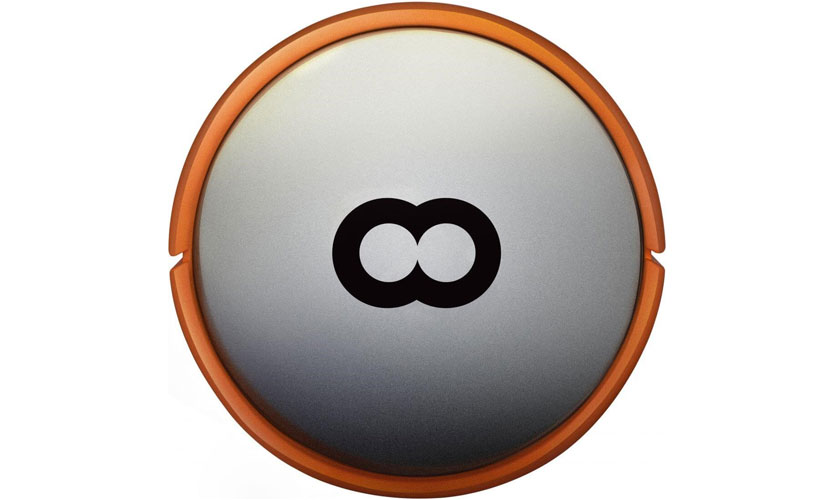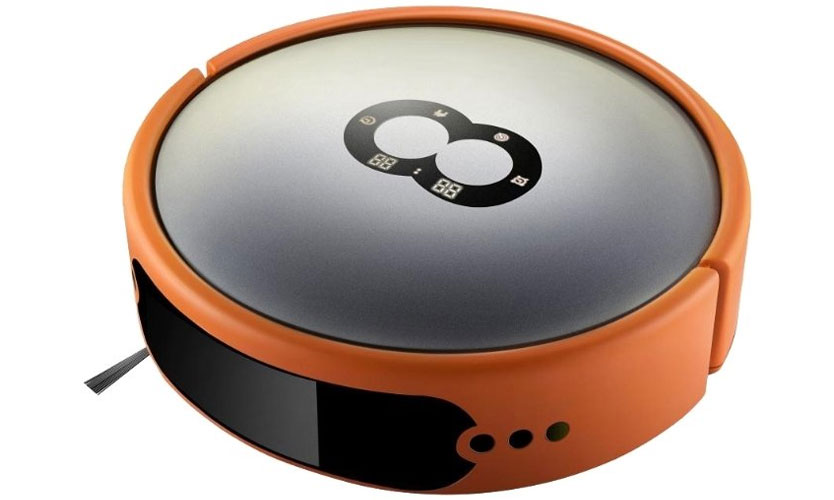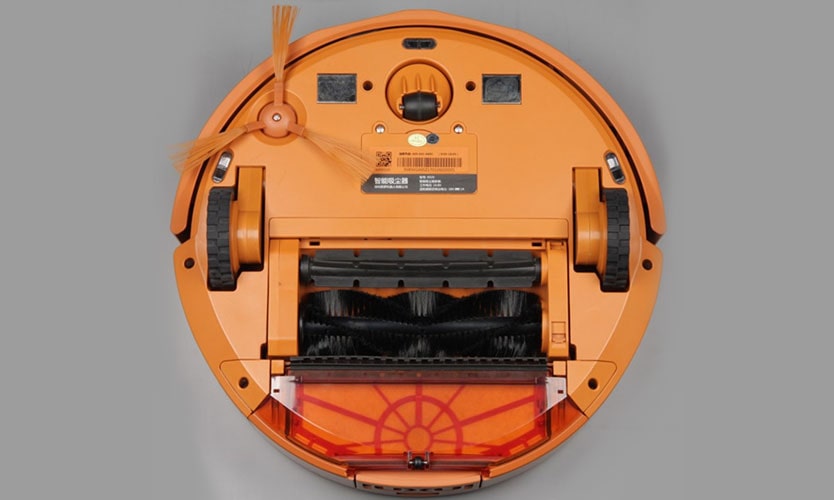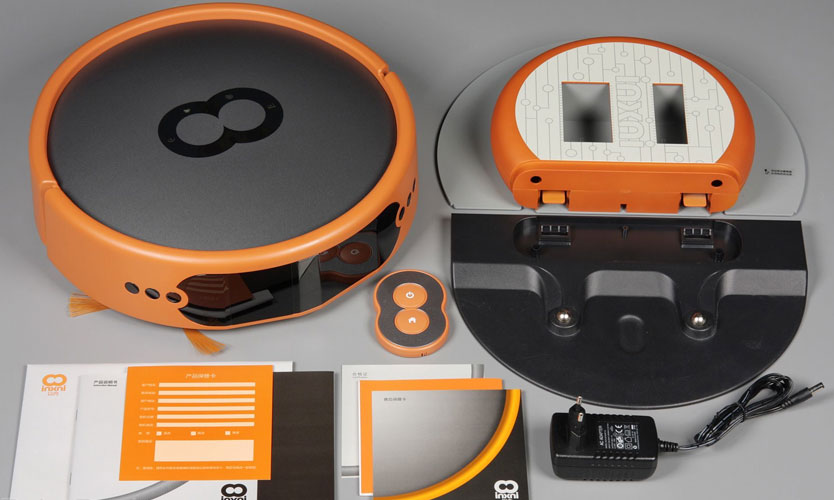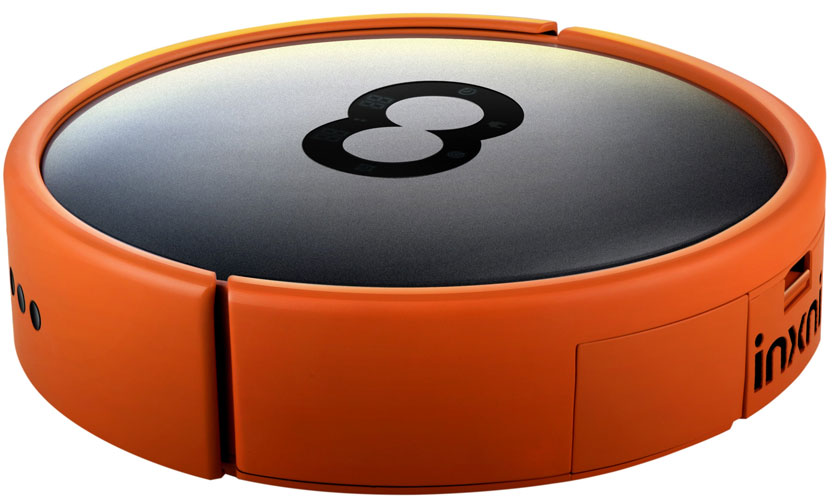A novelty in the field of robotic technology, it builds a map of the room itself and determines the best route of movement. Due to a more optimal trajectory of movement, the time spent on cleaning is reduced without loss of quality. The speed can be compared with the speed of a stationary vacuum cleaner. In the review, we will consider the advantages, disadvantages and functionality of the vacuum cleaner, we will find out in detail how it differs from its brothers and why it is worth choosing this model.
Specifications
- Weight - 3700 g.
- Diameter 34 cm, height 9.9 cm.
- Powered by a 2600mAh Li-lon battery.
- Power 24 W.
- Automatic charging at the dock.
- The time required for charging is 180 minutes.
- Autonomous work from the battery for 2 hours.
- Sound at work no more than 65 dB.
- Handles up to 150 sq.m of area.
- The volume of the container for collecting garbage is 350 ml.
- Controlled via remote control or smartphone app
- Navigation system: lidar, mechanical bumper, IR height sensor, obstacle detection sensor.
- Sound and light alerts.
Design
The design is standard - a round case with control elements at the top and working elements at the bottom. The model has its own characteristics. Its bumper is distinguished, behind it is an IR range finder hiding to create a room map. There are also sensors for changes in height and touching objects.
The body is matte, dark orange in color, while driving it can be clearly seen in the room. On the upper part of it there is transparent tinted plastic, in the center is a control system consisting of touch buttons grouped into eight. This control system allows you to start work or stop the movement. There are also indicators showing the battery charge, errors and the current time. They are all highlighted in bright orange.
It is distinguished by the model and the number of wheels - a pair of supporting wheels and a pair of driving wheels, one driving wheel in the front part, the second in the back on a litter container. The wheels are located on the same diameter as the circle, can make a full turn in place. Wheel mounts on spring-loaded joints with a stroke of 26 mm. A spring-loaded mechanical bumper runs along the entire front end.
In addition to the light indication, there are also sound alerts that cannot be disabled. The edges of the body are chamfered at the bottom for improved flotation. There is also some angularity on the top to improve the passage under the furniture. There is no carrying handle on the case.
The dust collector is made of transparent plastic, but this does not make its cavity visible from the outside; when filling with dust, it is difficult to determine its amount through plastic. The container is detached by pressing the latch at the back. Cleaning is quick and easy, the bottom and the curtain are tilted to a large angle, which allows you to open the filter and the entire capacity of the garbage compartment.
In the inner part there are two small additional filtering elements, but the main stream does not pass through them, but through the main large filter, which collects the bulk of the dust. The large filter can be disassembled, it consists of two halves, one with a fine mesh made of plastic, the other with a filter made of fibrous material. An air fan is built into the dust collector, it can be easily removed, so that the container can be washed with water, but after that it needs to be thoroughly dried before use.
At the bottom are the main brushes, the compartment with them is attached to a hinged mount with a stroke of 6-7 mm, they repeat the floor relief. For cleaning, the brush is removed from the grooves. On the right side there is a button for turning off the power of the robot. In addition to wheels and brushes, the bottom contains contact pads for connecting to the docking station. The charging station itself is large enough and has considerable weight. It is composed of two parts; anti-slip rubber pads are applied to the bottom of the lower part. It is quite stable and rarely moves when the robot is mounted on it to replenish the charge.
Functional
The garbage collection algorithm follows these steps: a side brush picks up garbage to the center, where a rubber scraper moves large debris into the suction hole, and a brush with bristles picks up large and small ones. On the edge of the flap of the suction hole there are teeth, they remove debris from the bristles of the brush. The second cleaning step - the remaining specks on the floor after brushing are sucked into the gap between the rubber scrapers in the lower section of the dust collector, where they settle on the filter. Such an algorithm of operation brings the robot closer to classic vacuum cleaners, since part of the debris is sucked from the very surface of the floor.
The vacuum cleaner is not suitable for picking up liquids or working in a damp room, after contact with moisture, immediately stop working and dry the vacuum cleaner thoroughly. The model's navigation system is based on a lidar, unlike its counterparts, this robot does not have to drive up close to an obstacle to determine it. Identification of interior items and walls at a distance allows the robot to build a map of the room and the optimal route in it.
The vacuum cleaner always accurately determines its own location and the location of the base, if it was started from it. Electronics remembers the places where the vacuum cleaner has already passed, places where cleaning is still required, unexplored areas. People or animals moving nearby do not interfere with the robot movement algorithm. The disadvantage of using the lidar is the height of its location - it sees only those objects that are above the line of its installation, everything that is below does not determine. For such low obstacles, the body is equipped with a mechanical bumper.
Models are available in three main operating modes:
- Auto. Work until the battery is completely discharged with a return to the base to replenish the charge.
- Local. Used to clean a specific area. Installation in the required zone is carried out manually. You can specify the desired zone on the map.
- Scheduled. You can even program several schedules, which indicate the time and days of cleaning.
The control system is implemented in three versions:
- Via the control buttons on the touch panel. Here you can see the current cleaning mode, time, battery level, possible errors in operation.
- From the remote control. Consists of two buttons - start in auto mode and return to base. Management is carried out only in the field of view of the device.
- Through the application in a mobile phone. This method offers the widest functionality. Here you can see the entire history of the activity of the vacuum cleaner, the construction of a work plan and trajectory, track the zones in which cleaning was carried out, in which it is only planned. The only drawback is the lack of the Russian language in the application functionality.
Equipment
- Power Supply.
- Dock station.
- Spare side brush.
- Spare filter in the garbage collection container.
- Remote control.
- Devices for cleaning the vacuum cleaner.
- Instruction
Advantages and disadvantages
Having studied the proposed functionality, we can highlight the following advantages of the model:
- Original and striking design.
- Optimized internal structure of the dust container.
- Building a room map.
- Cleaning speed.
- Scheduled cleaning programming.
- Slowing down movement in front of interior items, due to which the probability of damaging them is minimal.
- Connect to a mobile application.
- Good delivery.
And such cons:
- Leaves some trash along the walls.
- The design of the waste bin is complex, although it is considered improved.
- Does not detect wires on the floor.
- Pretty high cost - about 392 $.
- Lack of Russian language in the application.
See also: vacuum cleaners up to 350 $


